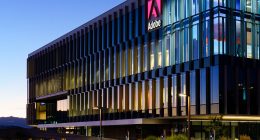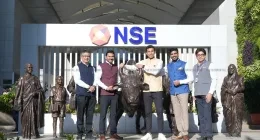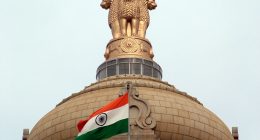Jeff Bezos’ dream project ‘Blue Origin’ has taken another step close to perfecting its reusable rocket module. In what can be only termed as another milestone, the Blue Origin has successfully completed its fourth launch and landing of their New Shephard rocket and crew capsule.
Even though Bezos is in a fist fight with its rival ‘SpaceX’ who is also trying to perfect its reusable rockets and land it aboard a floating drone ship. But it seems that with this nominal flight test, Blue Origin will be the first private rocket company to enable space tourism for the masses.
SpaceX even though has been able to successfully land a couple rockets back on the drone ship, but has never reused any of the rockets for another flight. All the successfully landed ‘Falcon 9‘ are now sitting in a hanger at the Kennedy Space Station. Also, the latest landing of the ‘Falcon 9’ ended in a disastrous blowing up of the rocket engine.
Blue Origin on the other hand has been using the same suborbital rocket module for its flight test over and over again. And now after four successful launches, Blue Origin is making this tech seem substantial and note-worthy. This strengthens our belief in the re-usability of rockets and the reiterates our dream of space travel.
This launch also switched things up a bit, and offered a live webcast of the launch and the landing of ‘Blue Origin’.
Today’s mission details
You must be wondering — if ‘Blue Origin’ has already successfully landed the rocket three times before, then why launch test it another time?
The purpose of today’s mission was to recreate an intentional crash landing of the crew capsule. Bezos’ wanted to test a scenario similar to Apollo 15, where-in one of the parachute fails to deploy during the landing of the crew capsule. Yes, this was also an unmanned ‘New Shephard’ crew mission. The company is using these launches to successfully test out each and every scenario before sending humans to space.
During a normal crew capsule landing, all three parachutes are deployed for a soft-landing back on Earth. But it is true, a failed parachute launch is a possible scenario during the time of descent. This mission also revolved around testing the robustness of the crew capsule in a situation of such a failure. And even with the crash test situation, both the reusable rocket and the crew capsule made their way back within 11 minutes.
The crew capsule, as stated by researchers working on the Blue Origin, has been designed to keep humans alive in rare situations like these.
Today, instead of taking live human subjects, the crew capsule was stacked with science experiments for this launch. And this was done to determine whether the projects would survive in an anti-gravity environment. During the sub-orbital profile into space, the experiments must have felt four minutes of weightlessness.
Space Tourism – a reality!?
Since Blue Origin has been successfully landing the reusable rockets, we should probably assume that the day we can pay for space travel is very near.
We hopefully expect to see a couple more unmanned flight tests over the period of next year. Bezos’ has however confirmed that ‘Blue Origin’ will be starting its space exploration program as soon as 2017. It would send some test pilots into space by the end of 2017 and then start taking paying customers to space in 2018.
If the launch tests keep going as desired, then the day we’ll all be standing in queue for a trip to space isn’t far away.
The Tech Portal is published by Blue Box Media Private Limited. Our investors have no influence over our reporting. Read our full Ownership and Funding Disclosure →






